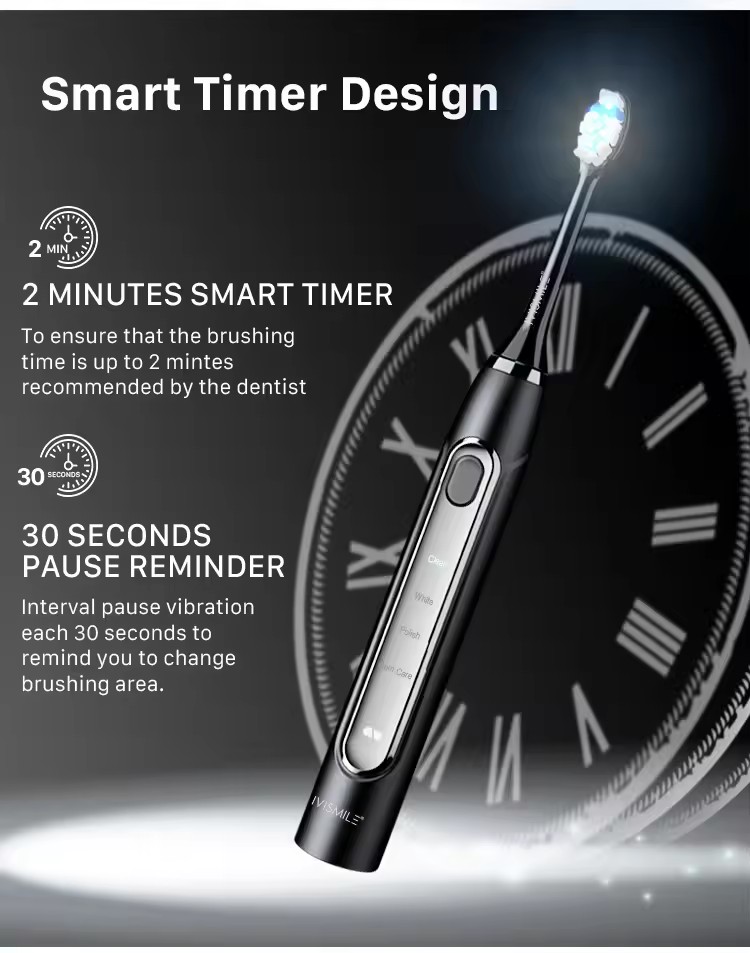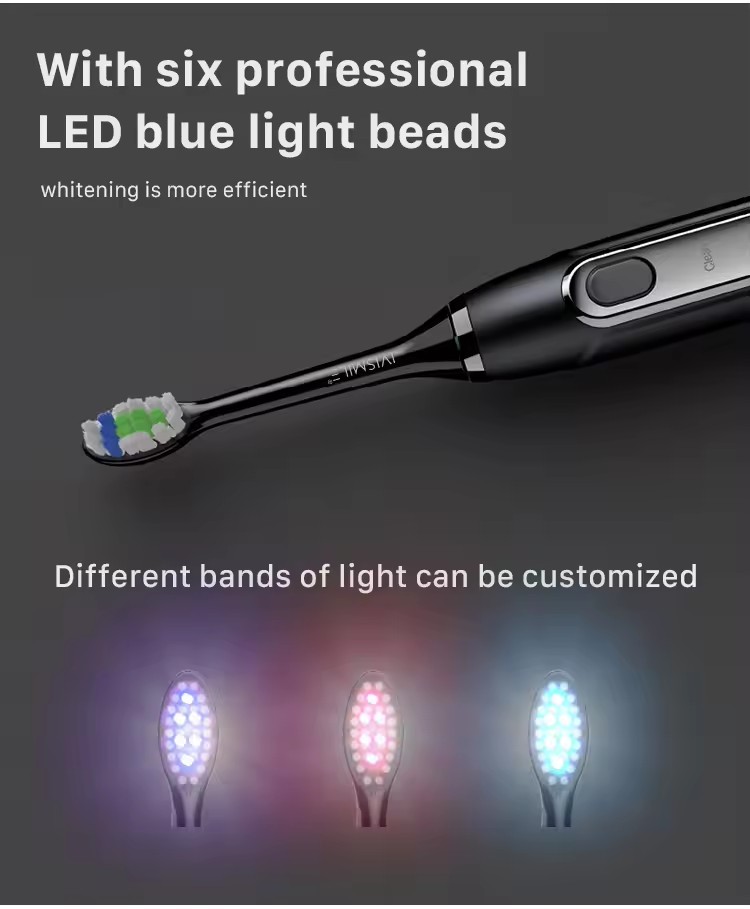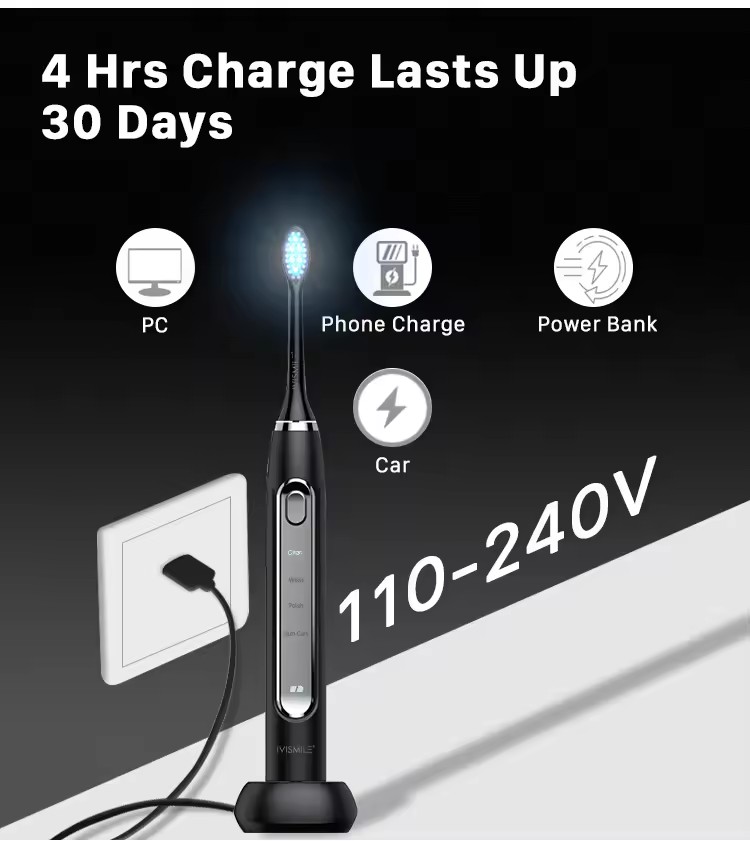We independently check everything we recommend. When you buy through our links, we may earn a commission. Find out more>
Nancy Redd is a health and beauty writer. She tested dozens of hair dryers, toothbrushes and vintage underwear.
We’re testing the new Oral-B iO Series 2 toothbrush, which retails for $60 and is only compatible with the iO Series brush heads (which typically sell for about $10 each).
If you benefit from an automatic two-minute timer or need or prefer a power brush, it may be worth switching from a manual toothbrush to an electric one.
After a total of more than 120 hours of category research, interviewing dental experts, reviewing nearly every model available, and testing 66 toothbrushes in hundreds of bathroom sink tests, we’ve concluded that the Oral-B Pro 1000 is the best toothbrush for you . receive.
While it doesn’t have any fancy features compared to other rechargeable brushes we’ve tested, it does offer what experts recommend as the most important features: a built-in two-minute timer and one of the most widely used lines of replacement brushes. heads — At an affordable price.
This vibrating brush features a built-in two-minute timer, sound pressure sensor, and long-life battery. Replacement brush heads are widely available and cost less than competitors.
This vibrating brush has the same basic features as our top pick, but is less noisy. But compatible brush heads cost twice as much.
A good electric toothbrush will do most of the teeth cleaning work for you. Simply move the oscillating or vibrating brush head gently across your teeth.
We prefer toothbrushes that are compatible with a variety of affordable and easily accessible replacement heads.
This vibrating brush features a built-in two-minute timer, sound pressure sensor, and long-life battery. Replacement brush heads are widely available and cost less than competitors.
The Oral-B Pro 1000, our top pick for nearly a decade, represents excellent value in a sea of electric toothbrushes filled with bells and whistles that no one really needs. It features a powerful motor, an automatic two-minute timer that beeps every 30 seconds to allow you to move the brush across all four quadrants of your mouth, and an audible pressure sensor that tells you when to relax. Plus, it’s compatible with eight different Oral-B refills. In our testing, the Pro 1000′s battery lasted at least a week between twice-daily cleaning sessions before needing to be recharged. The Pro 1000′s biggest downside: It’s louder than other brushes we recommend and requires manual shutdown even after two minutes.
This vibrating brush has the same basic features as our top pick, but is less noisy. But compatible brush heads cost twice as much.
If you prefer a quieter brush with a head that vibrates rather than oscillates, we recommend the Philips Sonicare 4100. Its sonic vibrations are quieter than our favorite Rotary, although they feel just as powerful. Like the Pro 1000, the 4100 features a two-minute quadrant timer, a sound pressure sensor, and a long-lasting battery. Unlike our top pick, this brush automatically turns off after two minutes of brushing. It’s compatible with 10 different Sonicare attachments (with two additional options over the Oral-B choice), but they cost more than twice as much as our top pick.
Water floss is more expensive, bulkier, and finickier than dental floss. If you need or want to floss with a constant stream of water, we recommend the Waterpik Ion.
To find the best electric toothbrushes, we consulted oral health experts, including dentists, dental hygienists, faculty members at top dental schools and research universities, and consumer advisors appointed by the American Dental Association, which awards dentistry its Seal of Approval . Companies seeking certification for their care products demonstrate their safety and effectiveness. We also consulted with caregivers who help others maintain oral hygiene.
Over the past nine years, we’ve spent a total of more than 120 hours researching and evaluating electric toothbrushes, reading research reports, and testing more than five dozen electric toothbrushes.
Nancy Redd is a senior health and beauty writer at Wirecutter. Over five years, her family has personally tested more than 100 electric toothbrushes, including dozens for children.
According to ADA guidelines, the only tool you will need to effectively brush your teeth is a toothbrush (manual or electric) used properly along with the fluoride toothpaste of your choice.
For more than a decade, various studies have shown that electric toothbrushes remove more plaque and reduce the risk of gingivitis than manual toothbrushes because they help people brush for a full two minutes, reduce uneven brushing, and do more physical work. . .
Electric toothbrushes typically cost more than 10 times more than a manual toothbrush, and the brush head must be replaced at the same frequency (every three months), with each replacement costing about the same as a manual toothbrush.
If you already have an electric toothbrush that you’re happy with, there’s no need to think about upgrading. If you brush your teeth by hand and don’t make an effort to maintain good brushing habits, there’s no reason to consider upgrading to a higher level.
Electric toothbrushes are more expensive than manual ones, and not just at first. Electric toothbrushes typically cost more than 10 times more than a manual toothbrush, and the brush head must be replaced at the same frequency (every three months), with each replacement costing about the same as a manual toothbrush. For the higher price, you get less hassle in developing good brushing habits.
Without a countdown, “the average time people brush their teeth is 46 seconds,” said Dr. Joan Gluch, director of oral health at the University of Pennsylvania School of Dental Medicine. “With a timer, people stay on it for at least two minutes. Clinically, we have found that patients do better with electric toothbrushes.”
Mark Wolf, DMD, PhD, chair of the University of Pennsylvania School of Dental Medicine, agrees. Electric toothbrushes “can help people who don’t brush their teeth well,” he said. “If you need guidance, invest in guidance.”
Over nearly a decade, we’ve tested (and in many cases retested) more than five dozen different electric toothbrushes. We evaluated the sensation of using each brush twice a day over several months and even years.
All you really need from an electric toothbrush is a powerful motor and a two-minute timer to ensure you’re brushing for the right amount of time.
The process involves calculating cleaning times and battery life, replacing the attachments every three months or more frequently if necessary, and cleaning the handle and charging base. To stress test the toothbrushes, we completely submerged each model in water and then dropped them from about 6 feet onto a tile floor. To estimate the approximate noise each brush makes when turned on, we used the NIOSH Sound Level Meter app.
After talking to experts, doing dental care research, and most importantly, using countless electric toothbrushes with different features and requirements, we’ve learned that what you really want in an electric toothbrush is a powerful motor and a two-minute timer to ensure you are brushing your teeth. teeth at the right time.
Nice features include Quadrant Rhythm (when the brush makes an extra buzz or stops buzzing every 30 seconds, letting you know it’s time to continue brushing another quarter of your teeth) and a pressure sensor (when the brush makes an extra buzz when it stops buzzing). or flashing lights telling you that you are brushing too hard).
There are no independent studies comparing the effectiveness of sonic or vibrating toothbrushes with vibrating toothbrushes; most existing research is industry-funded and includes proprietary branded products; Experts tell us that the choice largely comes down to personal preference. Our testers found this to be true in their own homes, as partners or children often prefer vibrating brushes over vibrating brushes, and vice versa.
As part of the American Dental Association’s accreditation program, manufacturers of oral care products such as electric toothbrushes and irrigators have the discretion to submit data to ADA-affiliated panels for review against a set of standards. Not all companies seek this certification for their products. Since the only factor the ADA considers critical to maintaining oral health is brushing your teeth with a fairly soft brush for two minutes and using proper technique, we think the ADA’s designation of recognition is good, but not necessary.
In this guide, we will focus on electric toothbrushes with rechargeable batteries. Those engines that use replaceable batteries tend to be less powerful and produce more battery waste over their lifetime.
This vibrating brush features a built-in two-minute timer, sound pressure sensor, and long-life battery. Replacement brush heads are widely available and cost less than competitors.
Oral-B Pro 1000 has all the expert-recommended features at an affordable price. It has a two-minute timer, beeps every 30 seconds, and is compatible with a variety of relatively affordable brush heads. We’ve been recommending this brush since 2015, and it continues to perform well in long-term testing.
Its engine is very powerful. The Oral-B electric toothbrush head can rotate and pulsate up to 48,800 times per minute, according to the company. As a high-quality electric toothbrush, the Pro 1000 does most of the brushing work for you. Despite the powerful motor, the brush handle does not vibrate along with the nozzle, so you will feel the buzzing not on your hands, but on your teeth.
easy to use. The Pro 1000 has a simple one-touch interface that lets you turn the brush on and off and switch between three cleaning modes: Daily Cleanse, Sensitive, and Whitening. To charge, simply place the brush handle on the holder.
Quadrant Rhythm brings order to the chaos of brushing your teeth. The brush rhythm timer beeps every 30 seconds to remind you to move the brush to a different part of your mouth. After two minutes, the brush pulsates three times, indicating the completion of a full cycle. It stays on, if you want to continue cleaning you will always have to turn it off manually;
It is reliable and durable. The Pro 1000′s battery lasts seven days of cleaning on a single charge, averaging more than 10 days in our testing; The brush has also undergone extensive drop and immersion testing, and in the case of our review unit, which we purchased in 2017, it lasted seven years of continuous twice-daily use. Oral-B offers a two-year limited warranty on the Pro 1000, and all Oral-B brush purchases come with a 60-day money-back guarantee.
You have a variety of attachments to choose from. Oral-B brush head replacements cost about $5 each when purchased in bulk, making them cheaper than brush head replacements from Philips Sonicare and many other competitors. Dentists recommend replacing your toothbrush with a new one every three months, so the cost savings increase over time. You can choose from eight varieties to find your favorite.
Oral-B toothbrushes like the Pro 1000 are louder and harsher than comparable Philips Sonicare models. Without comparison, you may not be able to detect this difference in sound. Our testers quickly got used to it. Our sound meter testing found the toothbrush to be 35 decibels in the standard “daily brushing” mode.
The battery charge indicator is blurry. It only tells you when the battery is charged (the green light is on for five seconds after removing the brush from the charging base) and when the battery is low (the red light flashes after the brush is turned off). Oral-B doesn’t specify how long it takes to fully charge the Pro 1000, but the company says you can charge the brush every day without significantly affecting the battery life, as long as it’s fully drained every six months.
The pressure sensor is not particularly effective. Although the sensor stops the brush from rotating when you press harder, our testers needed more force than expected to activate it. We found the illuminated pressure sensor on the Oral-B iO Series 6 brush to be more effective.
The Pro 1000 does not come with a storage case or attachment cover. However, you may find several options for covering the brush head to use when traveling or when the brush is not in use.
This vibrating brush has the same basic features as our top pick, but is less noisy. But compatible brush heads cost twice as much.
According to our sound level meter tests, the Philips Sonicare 4100 produces powerful vibrations and is quieter than our top pick: about 30 decibels at higher intensity settings. It also has the same key features, a two-minute quadrant cadence timer, and compatibility with a variety of attachments, although they cost a little more than the attachments that work with the Oral-B Pro 1000.
Unlike the Pro 1000, which has three cleaning modes of varying intensities, the 4100 only gives you two vibration intensities: strong or stronger. Our testers found that the higher intensity setting of 4100 roughly matches the feel of the Pro 1000′s daily cleaning mode.
Its battery life is excellent. The 4100′s battery lasts longer on a full charge than the Pro 1000. Philips officially says it can last two weeks on a charge, while our top pick, the Oral-B, lasts a week. In our testing, the 4100 lasted an average of 16 days when used twice a day.
It’s just as easy to drive as our top pick. With one-click brush functionality, you can turn it on with one click and increase the intensity with a double-click. The 4100 automatically turns off at the end of a two-minute cleaning cycle, or you can turn it off faster by pressing a button.
The brush head is narrower than our top choice. The brush head that fits the 4100 can make this model a better choice for people with small mouths. (For a smaller brush head, consider one of our recommended electric toothbrushes for kids, the smaller but powerful Philips Sonicare Kids Toothbrush.)
Post time: Jun-25-2024





